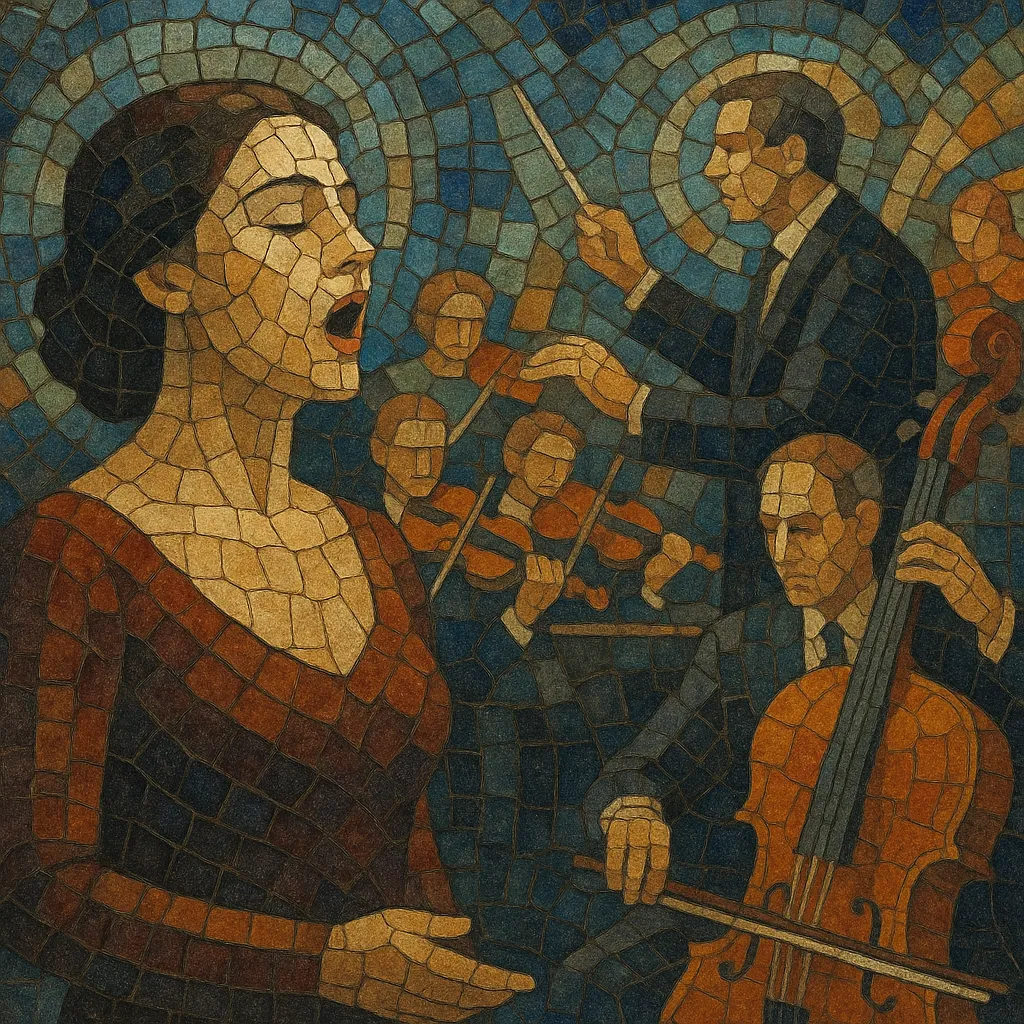Orchestral song is an art-song tradition in which a solo voice is accompanied by a full orchestra rather than piano or a small chamber ensemble.
It preserves the intimate, text-led focus of lieder and mélodie while expanding the expressive palette with orchestral color, timbral contrast, and large-scale dynamic shaping.
Unlike opera, it is not staged and typically sets discrete poems or groups of poems, often assembled into cycles. Forms range from strophic to through-composed, and the style spans late-Romantic tonal idioms to early modernist harmonies.
Central to the genre is the careful balance between textual clarity and orchestral richness, with the orchestra acting as a commentator and colorist—introducing motives, painting imagery, and framing the vocal line with preludes, interludes, and postludes.
The orchestral song grew from the 19th‑century art song (lieder/mélodie) as composers sought broader coloristic resources than the piano could offer. A seminal milestone is Hector Berlioz’s Les nuits d’été (composed in the 1840s and later orchestrated), often cited as the first fully realized orchestral song cycle. This period established the model: a poetic text set for solo voice with orchestral accompaniment that supports imagery and deepens narrative affect.
By the 1880s–1900s, the genre flourished across France, the Austro‑German sphere, and Britain. Ernest Chausson (Poème de l’amour et de la mer) and Henry Duparc crafted sensuous French mélodies in orchestral dress; Maurice Ravel enriched the palette with refined orchestration (e.g., Shéhérazade). In the German tradition, Gustav Mahler transformed the genre with psychologically and orchestrally ambitious cycles (Lieder eines fahrenden Gesellen, Kindertotenlieder, and Des Knaben Wunderhorn songs), blurring boundaries between symphony and song. Richard Strauss contributed orchestral lieder with soaring vocal lines and sumptuous textures. In Britain, Edward Elgar’s Sea Pictures (1899) exemplified the English contribution.
The language diversified in harmony and form. Jean Sibelius wrote stark, atmospheric orchestral songs; Ralph Vaughan Williams and other British composers extended the pastoral and modal idioms; Alexander Zemlinsky and Alban Berg brought late‑Romantic and early modernist colors (e.g., Berg’s Sieben frühe Lieder in orchestral form). Benjamin Britten revitalized the genre with crystalline textures and text‑sensitive writing (Les Illuminations; Serenade for Tenor, Horn and Strings), emphasizing transparency and modern prosody.
While many 20th‑century composers continued the tradition, orchestral song’s influence also radiated outward. Its integration of voice and large ensemble shaped the vocal symphony, informed film scoring’s treatment of solo voice with orchestra, and fed into symphonic rock and other crossover idioms. Today, composers draw on the genre’s principles—text‑driven vocal writing, motivic orchestral commentary, and coloristic orchestration—often in cycles that explore contemporary poetry and multilingual texts.
Select poetry with clear imagery and emotional trajectory. Decide whether each song is strophic, modified strophic, or through‑composed. For cycles, plan a tonal and narrative arc across songs.
Choose a voice type (e.g., soprano, mezzo, tenor, baritone) and set the key to a comfortable tessitura. Write lyrical, speech‑inflected melodies that respect prosody and diction, allowing space for breath and articulation. Consider leitmotifs for textual ideas or characters.
Use the orchestra as a colorist and commentator: deploy preludes/postludes, interludes, and instrumental motives that reflect or foreshadow the text. Keep textures transparent so the voice projects—favor light string divisi, solo winds, harp, and soft brass for support, reserving full tutti for structural climaxes. Double lines lightly (e.g., clarinet with mezzo, oboe with tenor) to enhance color without masking the text.
Late‑Romantic tonal language with modal inflections and extended chords works well; use chromaticism to underline tension and release. Align meter changes and phrasing with the poem’s syntax; invite rubato and flexible pacing with expressive markings. Employ motivic development between voice and orchestra to unify form.
For a cycle, design tonal relationships (relative/parallel keys) and recurring motives to bind movements. Use orchestral returns (refrains) or postludes to create structural memory.
Prepare a piano‑vocal reduction for initial rehearsals, ensuring essential harmonic pillars and cues survive the reduction. Mark dynamics meticulously to preserve balance; indicate orchestral doublings and solos that interact with the singer. Encourage clear diction and poetic emphasis; adjust orchestration (mutes, divisi, reduced brass) as needed to maintain clarity.


